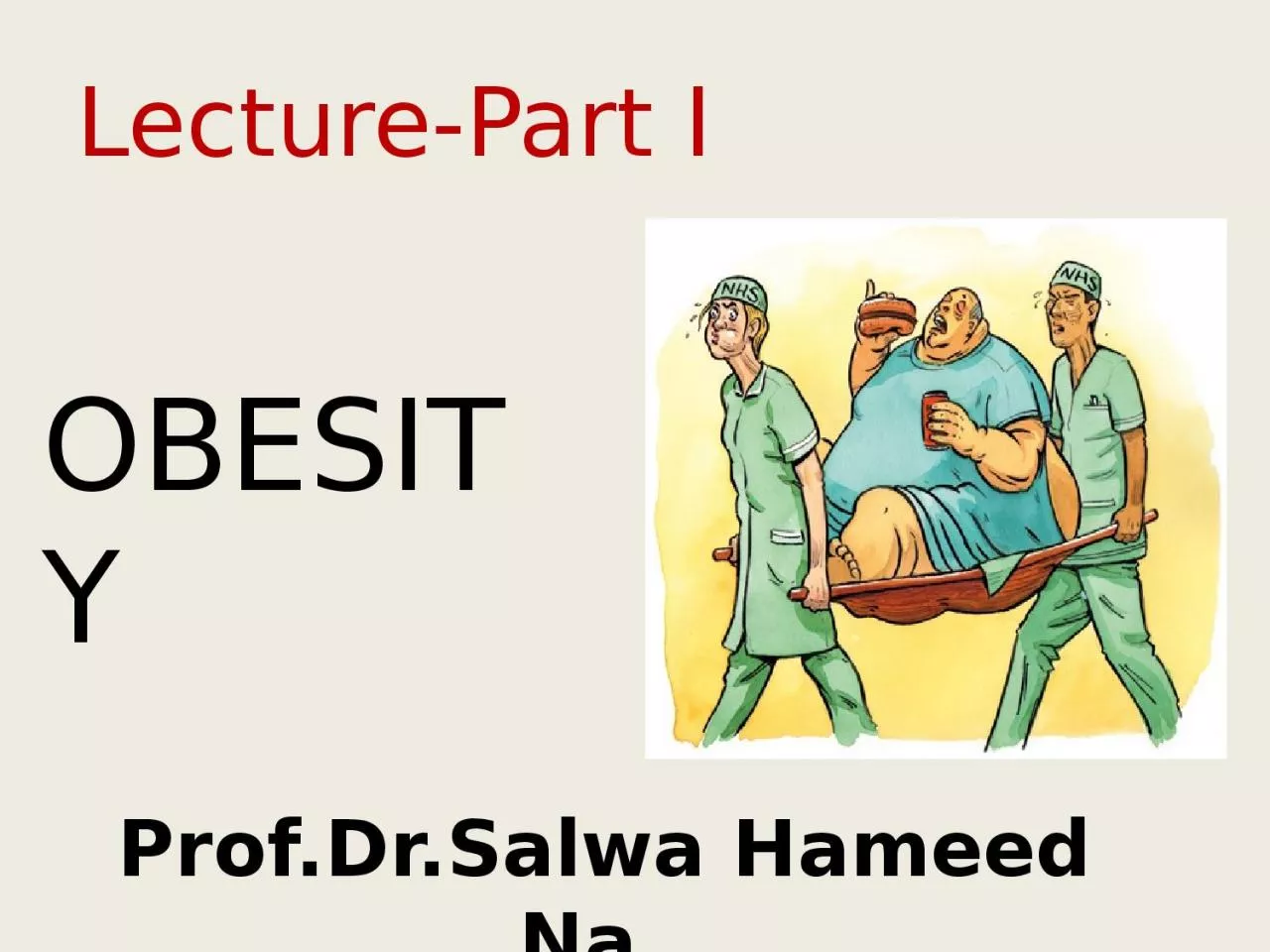

Hameed Na ser OBESITY OBESITY Obesity is a disorder of body weight regulatory systems characterized by an accumulation of excess body fat Today the sedentary lifestyle and abundance and wide variety of palatable inexpensive foods in industrialized societies has undoubtedly cont ID: 935573
Download Presentation The PPT/PDF document "Lecture-Part I Prof.Dr.Salwa" is the property of its rightful owner. Permission is granted to download and print the materials on this web site for personal, non-commercial use only, and to display it on your personal computer provided you do not modify the materials and that you retain all copyright notices contained in the materials. By downloading content from our website, you accept the terms of this agreement.
Slide1
Lecture-Part I
Prof.Dr.Salwa Hameed Naser
OBESITY
Slide2OBESITY
Slide3Slide4Obesity
is a disorder of body weight regulatory systems characterized by an accumulation of excess body fat.Today, the sedentary lifestyle and abundance and wide variety of palatable, inexpensive foods in industrialized societies has undoubtedly contributed to an obesity epidemic
Slide5ASSESSMENT OF OBESITY
Body mass index BMI = weight in kg/(height in meters)2 So BMI provides a measure of relative weight, adjusted for height
Slide6Anatomic differences in fat depositionThe anatomic distribution of body fat has a major influence on associated health risks.
1- A waist-to-hip ratio of more than 0.8 for women and more than 1.0 for men is defined as android, “apple-shaped,” or upper body obesity.2-lower waist/hip ratio reflects a preponderance of fat distributed in the hips and thighs and is called gynoid, “pear shaped,” or lower body obesity.
It is defined as a waist/hip ratio of less than 0.8 for women and less than 1.0 for men.
Slide7Endocrine functionWhite adipose tissue, once thought to be a passive reservoir of TAGs, is now known to play an active role in body weight regulatory systems
Slide8hormoneadipocyte is an endocrine cell that secretes a number of protein regulators:
1- Leptin regulates appetite as well as metabolism . 2-Adiponectin reduces levels of FFAs in the blood and has been associated with improved lipid profiles, increased insulin sensitivity resulting in better glycemic control, and reduced inflammation in diabetic patients.Adiponectin levels decrease as body weight increases, and leptin levels increase.
Slide9Importance of hepatic portal circulation: With obesity, there is an increased release of FFAs and secretion of
proinflammatory cytokines, such as interleukin 6 (IL-6), from adipose tissue. One reason that visceral and abdominal adipose depots may have such a large influence on metabolic dysfunction in obesity is that the FFAs and cytokines released from these depots enter the portal vein and, therefore, have direct access to the liver. In the liver, they may lead to insulin resistance and increased hepatic synthesis of TAGs, which are released as components of very-low density lipoprotein particles and contribute to the hypertriacylglycerolemia associated with obesity. By contrast, FFAs from lower body subcutaneous adipose depots enter the general circulation, where they can be oxidized in muscle and, therefore, reach the liver in lower concentration.
Slide10Thank You